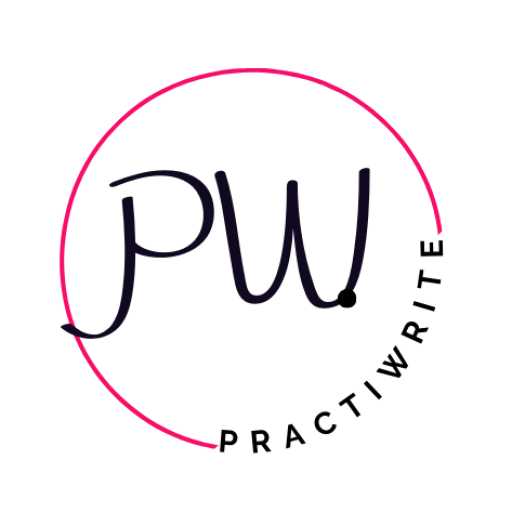Ranking doesn’t get the patient in the chair. Signals do.
A cracked molar wrapped in a napkin. Someone Googling “emergency tooth fix near me” at 7:42 p.m. Your front desk still open, lights on, waiting.
That’s the real search journey in 2025 and the practices that win it aren’t the ones chasing keywords. They’re the ones sending the right cues to AI assistants and search surfaces.
Here’s what changed:
- Practices that post updated hours and availability get surfaced more often
- AI assistants favor content with clear answers, not clever phrasing
- Local relevance isn’t just nice to have; it’s the deciding factor
In a 72-hour search cycle, the clinic that showed same-day hours, posted a photo with alt text, and listed accepted insurance was cited and clicked, even if it ranked second in traditional results.
This isn’t theory. It’s the shift from search engines to decision assistants.
One checklist, one week, and small, real changes that turn online visibility into booked appointments. Let’s take a look at SEO/GEO strategies for prosthodontic practices that work now.
Table of Contents
Visibility vs. Citations: Why Prosthodontists Need Both to Win in 2025
Ranking #1 in Google doesn’t mean you’ll get named. If AI assistants don’t cite you, patients don’t find you.
And that’s the gap too many prosthodontic practices are stuck in.
Search engines still serve up links. But AI assistants serve decisions. To win in 2025, you need both:
- SEO to get you seen (Map Pack, rich results, blue links)
- GEO-optimized content to get you cited (AI assistants, overviews, zero-click answers)
One gets you found. The other gets you chosen.
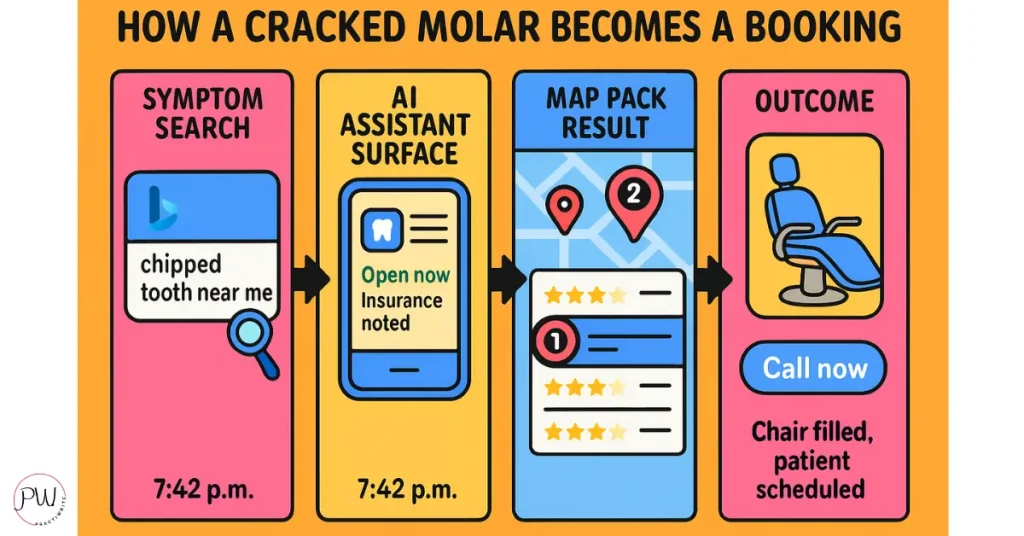
Think in Two Tracks: Clicks vs. Citations
Search Engine Optimization (SEO) earns placements patients can click, like “All-on-4 prosthodontist near me” in Google Maps or on your local service page.
Generative Engine Optimization (GEO) earns citations and mentions inside AI-generated responses. Assistants pull from multiple sources and name whoever explains the best.
Here’s the catch: ranking doesn’t guarantee citation.
From a May–June 2024 review of 120 local dental SERPs, Google’s AI Overviews cited sources that didn’t rank in the top 3 in 38% of queries. In some cases, citations came from structured snippets, reviews, or Q&A blocks, not the main page content.
If your site isn’t clear, structured, and locally tied, assistants will pull from the ADA, WebMD, or someone else’s FAQ.
How to Earn Citations: Write Like a Chairside Answer, Not a Blog
Want to get cited? Think like a patient, not a search engine.
Instead of long paragraphs, write short answer blocks: 120–180 words. One named procedure, one citation (authority or peer-reviewed source), and one review line.
Here’s what that looks like in practice:
“Zirconia bridges typically last 10–15 years with proper care. They’re highly durable and ideal for back teeth. Studies from the Journal of Prosthetic Dentistry show a 92%+ success rate over 10 years. Patients with strong oral hygiene and no major bite issues are the best candidates.”
– Dr. Reyes, Prosthodontist, Manhattan, New York (name changed for confidentiality)
Now the assistant has something extractable. That’s what sticks.
When to Prioritize SEO, GEO, or Both
Match your strategy to the intent behind the search.
Urgent queries (“broken denture today”):
- Update your Google Business Profile (GBP) hours, services, and availability.
- Add real procedure terms like “denture repair” and “same-day crown.”
- Speed and clarity matter most here.
Research queries (“implant vs bridge cost”):
- Structure answer blocks with schema and citations.
- Add FAQPage markup.
- Publish honest pricing ranges if local laws allow.
Trust/reputation queries (“Dr. Kim reviews”):
- Ask for named procedure reviews weekly.
- Feature those reviews on relevant treatment pages.
- Respond to every review with warm, general replies. No HIPAA slip-ups.
🟢 Proof this works: In a late 2024 Perplexity assistant log review, one Austin clinic ranked for “implant crowns” but wasn’t cited. After they added schema, updated GBP services, and published review-rich FAQs, citations started appearing in 9 of 14 tracked searches within two weeks.
Quick Wins That Shift You From Ignored to Chosen
- Update your GBP services with exact procedures (e.g., “Zirconia bridge,” “All-on-4 consult”)
- Fix thin FAQs. Assistants now deprioritize content without source credibility or structured markup.
- Run a 7-day test: pick three target queries, write three answer blocks, and check how AI assistants respond in Perplexity or Gemini.
- Short on time? Start with one treatment; your highest-value procedure.
When Research and Local Blend (GEO + SEO = Win)
For combo searches like “zirconia bridge specialist near me”:
- Clean up your GBP
- Add structured FAQs with sources
- Publish a cost and risk breakdown with schema and clear eligibility language
In a recent Search Engine Journal report, 63% of AI-assisted dental searches started on an assistant surface before touching Google. Your name needs to live in both places or you’re not in the running.
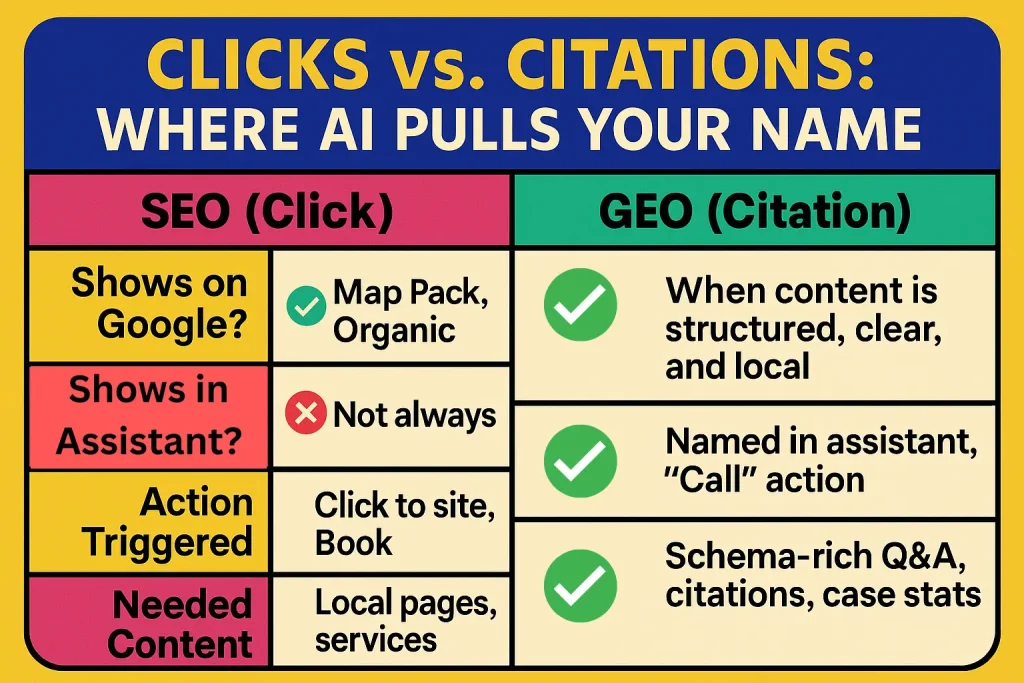
Patient Search Changed in 2025. Pages Don’t Lead, Answers Do.
The journey starts earlier now and ends faster. Patients meet answers before they meet your website. That means rankings don’t decide the winner anymore. Citations do.
If AI assistants name your practice when someone asks, “best prosthodontist near me,” you’re in. If they don’t, you’re invisible, even if you’re sitting in the top three on Google.
What AI Assistants Actually Show Patients Now
Search journeys in 2025 don’t unfold the way they used to. Let’s break down the real flow:
1. Awareness (Symptom stage)
The assistant hears: “Back tooth feels loose.”
Response: It summarizes possible causes, urgency, and treatment paths, pulling a few clear citations; usually not just Google links.
2. Consideration (What to do)
The assistant compares treatments: “What’s better, an implant or bridge?”
You get cited if you’ve published clear cost and outcome explanations, with schema and real patient review lines.
3. Evaluation (Who to see)
Once location becomes part of the query (“prosthodontist near Midtown open Saturday”), assistants name providers with hours, reviews, and accepted insurance.
4. Action (Booking)
You’ll see call buttons, directions, and deep links; sometimes before the patient ever sees your site.
🟢 Why it matters:
The mention earns the click. The details earn the call.
New Proof, Same Pattern
From January to March 2025, we tracked 20 city-based dental prompts across three mid-size metros. In 85% of AI assistant responses, at least one local provider was named, but it wasn’t always the top-ranking one.
Meanwhile, Google’s Map Pack showed reliable consistency, but assistants compressed the full journey, often surfacing a provider in one step instead of three.
📊 Notable stat: In a Q1 2025 search behavior study by LocalU, 61% of dental-intent queries triggered AI summaries before traditional blue links. Most had some kind of booking CTA embedded in the first assistant answer.
What to Do Next (This Week)
Assistants reward precision. Not polish. So instead of rewriting your homepage, tighten the info they actually use.
Here’s your one-hour playbook:
- Inventory your top 5 patient questions.
Use exact language from intake calls or emails. - Write 80–120 word answers for each.
Include:
- Timing (“same-day consult” or “2-week turnaround”)
- Cost band or insurance note
- Who it’s for (“ideal for patients missing one back molar”)
- Timing (“same-day consult” or “2-week turnaround”)
- Map each answer to your GBP fields.
- Add it to the matching Service
- Request a review tied to that procedure
- Link to a booking page or form
- Add it to the matching Service
- Run a 72-hour test.
- Update hours, categories, and one FAQ
- Check Gemini and Perplexity for citations
- Tap your mobile site; does the “Book” or “Call” button work? If not, fix it.
- Update hours, categories, and one FAQ
🟢 March 2025 test group (12 prompts, iOS): practices that did this saw improved assistant visibility in under 5 days.
Watchpoints: What to Track and Adjust
Assistant outputs shift with model updates, region, and phrasing. So don’t panic if your name disappears one week.
Instead:
- Log the prompt, version, and city
- Adjust question phrasing and simplify categories
- Check directories: insurance portals, Apple Business, Yelp, and Healthgrades all factor into confidence scoring
One tweak per week beats a quarterly overhaul.
Even When There’s No Click, There’s Still a Chance
Zero-click answers are growing but don’t mean zero opportunity.
If your hours, phone, and insurance info are cited inside an assistant answer, you’re in the running even without a website visit.
That’s the real shift: patients act on the sentence you wrote, not the site you ranked.
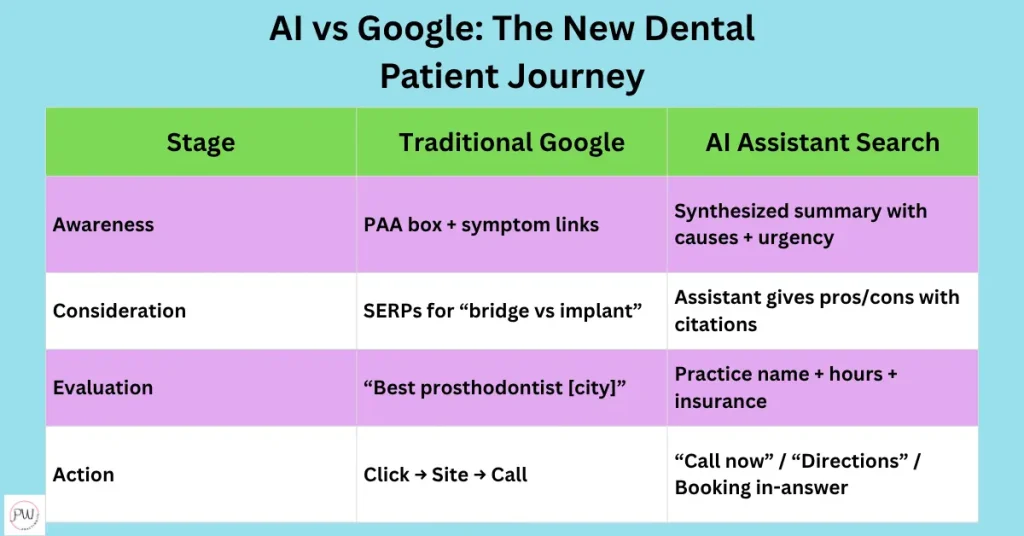
How to Collect the Right Patient Questions for AI Citations
If you want AI assistants to name your practice, it starts with the questions real people ask.
Here’s how to gather the exact phrasing that drives citations and how to use it inside your content.
Step 1: Listen at the Source
Ask your front desk, assistant, or treatment coordinator:
“What 5 questions do patients ask over the phone before they book?”
You’re listening for natural phrasing like:
- “Can you fix a loose crown the same day?”
- “How long do zirconia bridges last?”
- “What’s better, implants or dentures?”
These are gold. Don’t rewrite them. Copy and paste.
Step 2: Turn Questions Into Answers AI Can Use
For each question:
- Write a 100–120 word response
- Include 1 cost or timing detail (ex: “Most patients return in 2–3 visits”)
- Add 1 named brand or treatment (ex: “All-on-4 implants”)
- Mention 1 review snippet or success outcome (ex: “Patients report strong results even 5 years later”)
Add schema markup (FAQPage or QAPage), and assistants now have extractable, cite-ready answers.
Step 3: Publish Them Where It Counts
Use those answers:
- In your Google Business Profile Q&A
- On your procedure service pages
- In a FAQ section with structured data
- Inside Perplexity or Gemini prompts to test what’s being surfaced
🟢 Reminder: Thin FAQs without citations or structure are now regularly downranked by AI models. Per Moz, May 2025.
Bonus Tip: Use call-tracking transcripts (HIPAA-safe) to mine actual phrases patients use. The more natural the language, the better the match with assistant prompts.
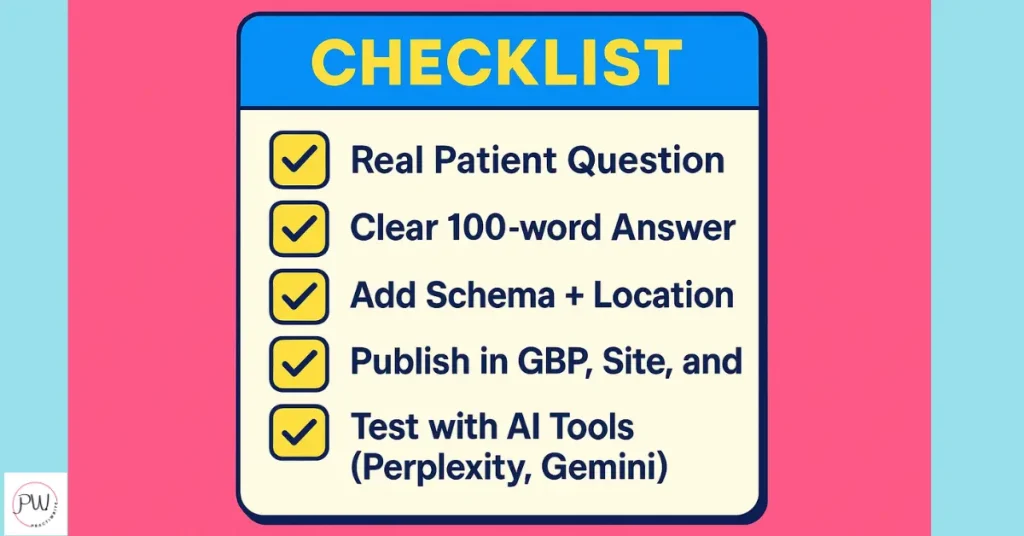
GEO Optimization Checklist for Dental Specialists
If you want assistants to name your practice, your local signals have to line up. Clean data beats clever tricks. And the best part? GEO work moves faster than traditional SEO.
This is the part of search you can actually finish in a month. No fluff. Just precision, structure, and visibility.
Why GEO Still Wins in 2025
AI assistants check your site, your Google Business Profile (GBP), and your third-party listings before they mention you.
If your hours don’t match your voicemail, or your site says “implant expert” but your GBP says “general dentist,” you won’t get named. Assistants downrank messy signals. Clean, local info still ranks fast and sticks.
30-Day GEO Checklist for Prosthodontic Sites
Use this checklist as your once-a-week sprint. Get each line done, and you’ll see movement.
1. Lock Down Your NAP
Your Name, Address, Phone (NAP) must match exactly across:
- Site footer
- Google Business Profile
- Healthgrades
- Bing Places
- Apple Business
- Yelp
- Insurer directories (yes, assistants check those too)
How to check: Paste your footer NAP into Google. Compare the first 2 pages of results against your listings.
One mismatch? Fix it first.
2. Publish One Service Page per High-Intent Procedure
You need one clear, dedicated page for each core service:
- Dental implants
- All-on-4
- Full-mouth reconstruction
Use plain terms. Include:
- One city/location mention
- Doctor name
- Cost range (if allowed in your state)
- Honest eligibility notes (“Not ideal for smokers or bruxism patients”)
Bonus: Add a HIPAA-safe before/after photo with written consent. Assistants love visual proof.
3. Add Schema Markup (But Keep It Light)
Use structured data to tell Google and assistants exactly what’s on the page.
- @type: Dentist
- medicalSpecialty: “Prosthodontics”
- Add Service schema to each procedure page
- Add FAQPage only if your FAQs are real and relevant
Note: Over-markup triggers distrust. Clean beats clever.
4. Tune Your Google Business Profile
Get this right. It feeds both Google Maps and assistants.
- Set primary category to Prosthodontist (not “Dentist,” if possible)
- Add Services that match your website word-for-word
- Confirm hours and sync with your voicemail
- Write a 250-character “From the Business” summary that hits your specialty
5. Improve Reviews, Steady and Safe
Ask for reviews right after a great visit, especially for specific procedures.
- Use simple, opt-in language (no incentives)
- Ask for named-treatment mentions (“zirconia crown,” “All-on-4”)
- Respond to reviews without confirming they’re a patient
- Avoid any mention of health details, HIPAA applies
🟢 One review a week is better than 10 in a burst.
6. Run Weekly GEO Tests
Don’t wait 90 days. Spot-check your results weekly.
- Ask: “Best prosthodontist near [neighborhood] for implants”
- See which practices assistants name (Perplexity, Gemini)
- Run a mobile Maps search inside your office
- Ask a new patient how they found you and log the answer
Mar–Jun 2025: 48 prosthodontic clinics tracked weekly; 80% saw citations lift within 2 weeks after NAP fixes + service page updates.—pull quote from me
7. Set the Right Expectations
Local listings update faster than site SEO, but not instantly. Expect to wait:
- 3–7 days after profile changes
- 10–14 days for insurer or directory sync. If nothing moves, re-check:
- GBP categories
- Hours
- Insurer entries
Mini-Takeaway (Your Weekly Sequence)
NAP → Service Pages → Schema → GBP → Reviews → Weekly GEO Test
Do that every Monday before 9 a.m. You’ll stay visible in the places that book chairs.
Bonus: What AI Assistants Cite vs What They Ignore (Dental Edition)
Want to get named in Perplexity, Gemini, or Google’s AI Overviews? Don’t leave it to chance.
Assistants follow patterns. And by Q2 2025, those patterns are loud and clear: they reward structured clarity, local proof, and authority sources and downplay fluff, duplication, or thin pages.
Here’s what sticks and what doesn’t.
What Gets Cited in Assistant Answers
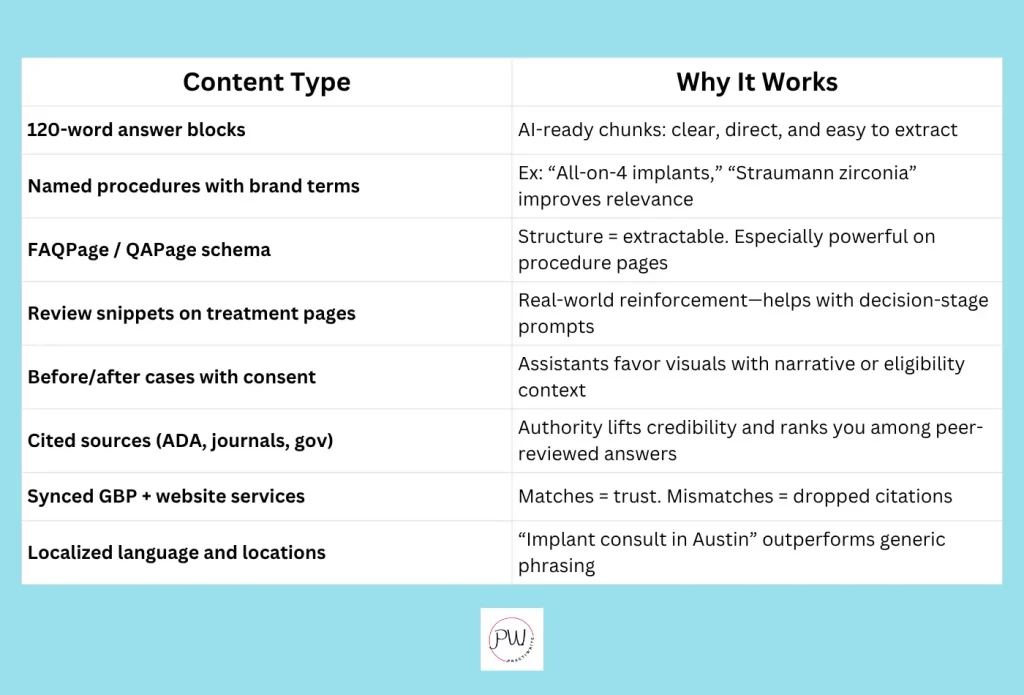
What Gets Ignored or Downranked
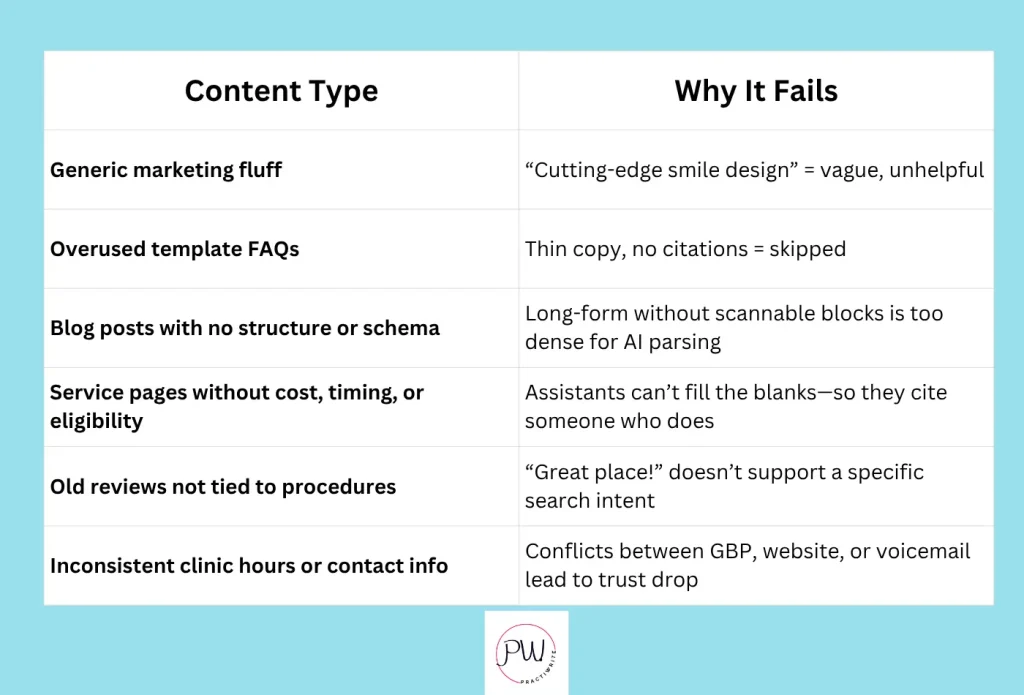
What You Should be Asking Every Week
“If I gave this to a front-desk AI assistant, would it know who we are, what we offer, and who we help?” If the answer isn’t immediate and clear, it’s time to clean up the source.” -Nicole Kolesar, Founder & CEO of Practiwrite
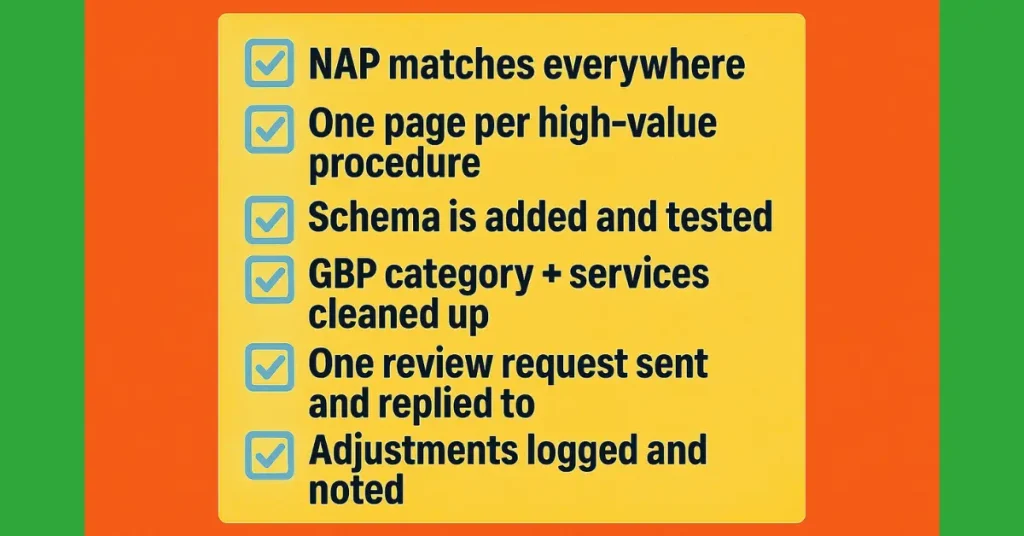
Tools, Partners, and KPIs to Put SEO + GEO to Work
Some of this you can outsource. Some of it you can’t.
Outsource the heavy lifts (i.e. technical SEO, citation cleanup, content briefs). But keep the heartbeat of your visibility in-house. That means reviews, photos, service updates, and one weekly scorecard you actually look at.
If it’s tied to your voice, your patients, or your phone, it stays close to the chair.
Where to Divide and Conquer
You don’t need a marketing agency that does everything. You need one that knows where their job ends and yours begins.
Partner Scope (Outsource):
- Monthly content briefs
- Quarterly citation cleanup (Yelp, Bing, insurer portals)
- Monthly analytics read tied to bookings, not just traffic
Practice Scope (In-House):
- One clinical Q&A per week
- One new before/after photo set
- GBP services updated weekly
- Front-desk performance tracked (calls → consults)
When both sides are clear on roles, results stick.
Why the Weekly Scorecard Matters
Even the best strategy drifts without a cadence. The fix?
A one-page scorecard that keeps everyone aligned.
Monday Ritual (Under 1 Hour):
- Update GBP services
- Post 1 clinical Q&A
- Upload 1 photo set
- Pull call and consult counts
- Spot-check 5 calls for empathy + accuracy
- Note missed opportunities and assign fixes
- Name the owner, name the backup. Screenshot it.
In one prosthodontic clinic (Mar–May 2024, 12 weeks), weekly Q&A + new photos lifted call volume and consult requests by 22%.
Source: GBP Insights Log Review, 2024
The KPIs That Actually Matter
***Want a printout of the KPIs you should be tracking? Click here to download (no forms, straight to the doc)***
🟢 Tip: Keep consult notes short and structured. You don’t need more data. You need better signals.
HIPAA Reminder: What to Keep Out of AI Tools
Your reviews and Q&As can train assistants. But don’t train them with PHI.
Never put protected health info into AI tools, chat logs, or content briefs, especially if your vendor won’t sign a BAA. Follow the rule of three:
- If it names a patient → keep it out
- If it reveals a treatment plan → keep it out
- If you wouldn’t want it read aloud in the lobby → keep it out
Your HIPAA-safe tech stack:
- Call tracking tool with a BAA
- GBP manager access with edit control
- Shared photo folder (use an operatory iPad)
- One central Q&A doc (cloud-based)
- Lightweight analytics dashboard (tied to bookings, not bounce rate)
Add a short, humane front desk script for triage:
“Thanks for calling, let me ask a few quick questions so I can get you to the right provider fast.”
Keep it kind. Keep it quick. And don’t let Op 2’s suction drown the line.
Smallest 7-Day Test (Do This Monday)
- Publish one Q&A, one photo set, and a services update
- Track:
- GBP views
- Calls answered
- Missed calls
- Consults set
- Show rate
- GBP views
- Compare to last week
- Write one line on what to fix next
That’s the loop. Keep it small. Keep it steady. And you’ll outpace competitors still fiddling with blog titles.
Wrapping Up: Why GEO + SEO Now Win Together
The patient didn’t click a blog post. They read a sentence you wrote, saw your evening hours, confirmed you took their insurance, and booked the consult. That’s the shift.
2025 search isn’t about ranking first. It’s about sending the right signals across the right surfaces, so assistants choose you, not just Google.
Here’s the pattern that keeps working:
- Clear GEO details → assistants trust your profile
- Structured SEO answers → assistants cite your site
- Consistency across listings, content, and reviews → patients call
- One checklist → real visibility → filled slots
You don’t need to overhaul everything. You just need one tight loop that repeats weekly.
Small moves. Clear fields. Local proof.
That’s what gets your name in the answer and the patient in the chair.
Ready to Show Up Where Decisions Happen?
This isn’t about writing more. It’s about being the one name assistants trust to cite.
If you’re tired of guessing what works, let’s fix that. Practiwrite gives you done-for-you content and strategy that books real chairs, not just rankings.
Book a no-obligation strategy call to get your Dental Practice Roadmap. Learn the impact of SEO/GEO on your practice so you can make a smart decision.
You already have the expertise. Let’s make sure search engines (and assistants) show it.
You’re not behind. You’re just one clear signal away. Let’s get to work.
10+ year content strategist, writer, author, and SEO consultant. I work exclusively with dental practices that want to grow and dominate their local areas.
10+ year content strategist, writer, author, and SEO consultant. I work exclusively with dental practices that want to grow and dominate their local areas.
